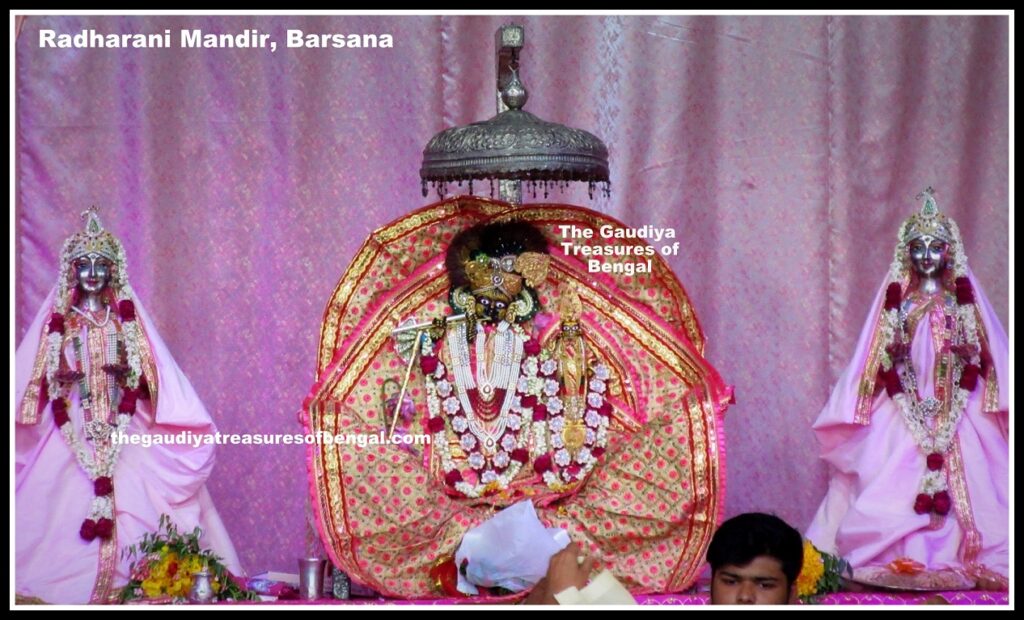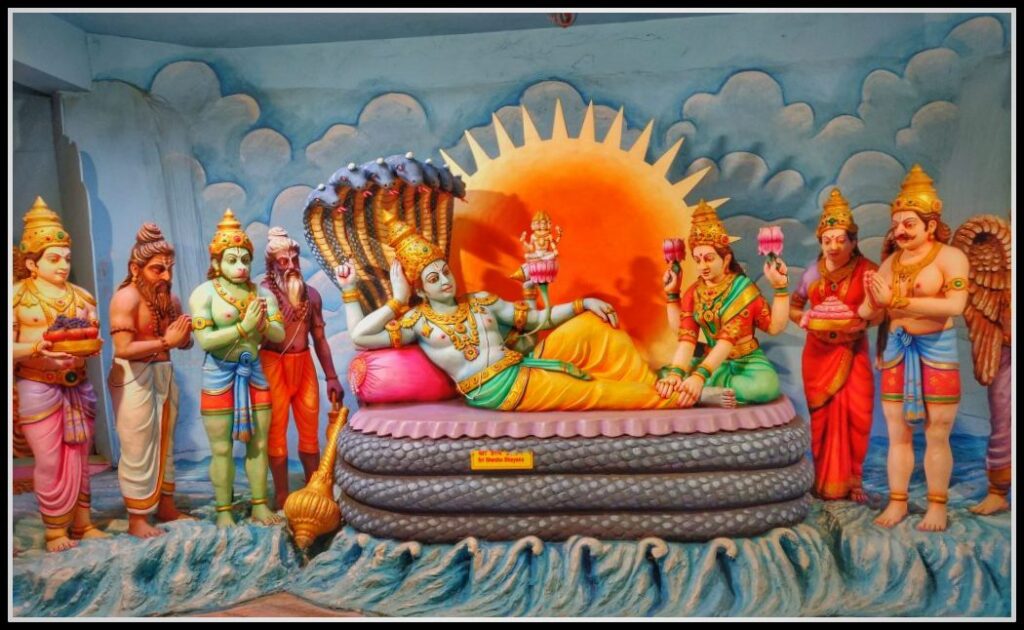
Padma Purana states that Lord Brahma had previously performed severe austerities with the desire to witness the pastimes of Radha and Krishna and obtain the dust of their lotus feet upon his head. Being pleased with Brahma, Krishna granted him the boon to manifest himself as mountains here at Barsana. As a result, Brahma manifested himself as the Brahmagiri mountains here at Barsana. Brahmagiri has four different peaks representing the four heads of Lord Brahma. There is a second hill situated right next to Brahmagiri known as Vilasa Parvata or Vishnu Parvata which is considered to be a manifestation of Lord Vishnu. The four peaks of these hills are – Bhangarh, Managarh, Danagarh, and Vilasgarh. Bhangarh (the highest of the four peaks) is where Vrishabhanu Maharaja had established his palace and where Radharani manifested her childhood pastimes. Sankari Khor is the narrow passage between Brahmagiri Parvata and the Vilasa Parvata. ‘Sankari’ means narrow and the word ‘Khor’ translates to lane. Hence ‘Sankari Khor’ refers to the narrow passage between the two mountains through which one can only pass in a single file. One might be lean or bulky but no matter how much one tries, only a single person can walk through Sankari Khor. It is impossible for two to walk side by side. It is here at Sankari Khor that Krishna manifested His Dana Keli pastimes.




